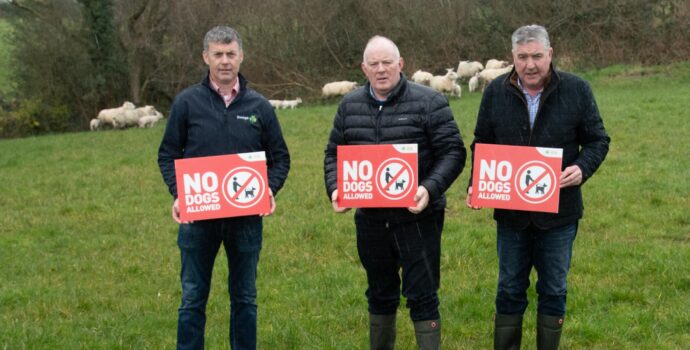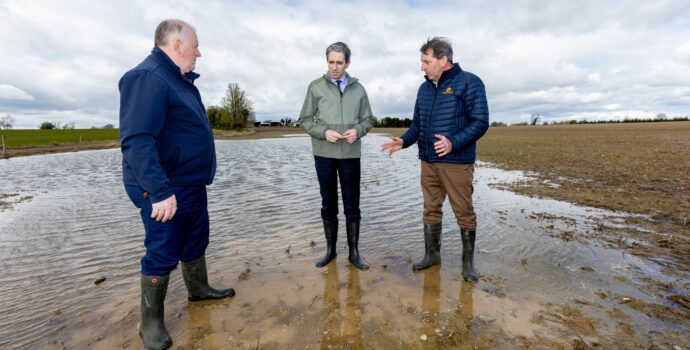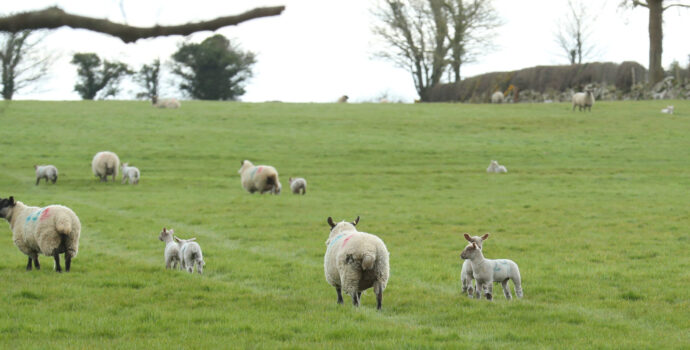A Difficult Dairy Year Ending with Some Christmas Cheer

IFA National Dairy Committee Chairman Sean O’Leary reviews how IFA positively influenced what has been a difficult year for dairy farmers, and looks forward to a much improved 2017.
Early last summer, I met with a co-op CEO who told me his co-op had not increased milk prices in 3 years. Irish milk prices started to fall in May 2014, and while 2015 was saved by high volumes, good production conditions and low feed costs, we knew early on that 2016 would be very challenging.
The spring started cold and wet, delaying grass growth and cows turn out, and forcing farmers to spend more on feed at a time when milk prices were depressed by seasonally low constituents.
Merchant credit started to build up and those farmers with superlevy bills who had benefited from the 3-year repayment scheme still had some of those bills to face over peak months.
Cashflow campaign results in low-cost loans
Conscious that cash flow difficulties were the main issue for many dairy farmers, the IFA National Dairy Committee undertook a political lobbying campaign to encourage our Government to make use of the exceptional concessions on state aid rules voted by the EU Agriculture Council in March in recognition of the liquidity crisis on Europe’s dairy farms. This, we believed, would allow the Government to back low cost short term financial facilities to allow farmers convert their expensive merchant credit and superlevy bills, as well as other draws on their cash flow.
While our campaign started in May, it finally came to fruition when, utilising also Ireland’s €11.1m share of the EU €350m Adjustment Aid voted in August, and matching it with €14m from national funding as sought by IFA, Minister for Agriculture Michael Creed delivered a low cost cash flow loan package in Budget 2017.
The EU Adjustment aid aimed to support all livestock farmers – numbering well over 100,000 in Ireland – so that spending it in the same way as the dairy farmer specific €400m package in late 2015, which delivered €1300 per farmer, was never going to result in anything nearly as worthwhile – as little as a couple of hundred euros at best.
Instead, the 2.95% cash flow finance it is unlocking and which will be made available to farmers by the pillar banks and other lenders from January 2017, will allow farmers to save money on financing costs and reduce outgoings by extending their bill repayments over slightly longer periods.
It also sets a crucial precedent for this type of financial package, with the potential to increase competition among financial institutions and reduce the cost of cash flow finance for the long term.
Right now, it is unlikely that your local bank branch will have any information at all about these packages, but they will in the New Year, and we urge SBCI, the banks and other lenders to ensure no time is wasted in getting those application forms out in January.
Voluntary milk production reduction scheme
The EU voluntary production reduction scheme, which incentivises farmers by 14c/kg to temporarily reduce output to speed up the recovery of dairy markets and prices, was particularly attractive for Irish dairy farmers, as most were going to produce less in the last quarter of 2016 than in the same period in 2015. With very tight deadlines to apply, IFA engaged with the Department and co-ops to ensure farmers who wished to participate in the scheme got all the information and support they required in good time.
Taxation
IFA has also lobbied hard for a few years now to secure greater flexibility in farm taxation to help farmers face what are now very volatile incomes. Progress was made last year with the extension of the 3-year income averaging scheme to 5 years.
Budget 17 delivered yet more of what IFA had pressed for: a one-year opt out from the 5-year income averaging, available immediately for 2016 income. There is more to be delivered in this space, and IFA will continue its campaign ahead of Budget 2018.
Milk Price
While market returns fell to levels last experienced in 2009, IFA lobbied co-ops throughout the year to minimise price cuts and optimise supports – be they price related, flexibility on merchant credit or other assistance.
IFA was among the first to identify the turn in markets in early summer, and after a monthly co-op board lobbying campaign, milk prices started to rise in July.
Prices to November increased by between 4.5 and 7.5c/l, so that most co-ops are now within touching distance of the psychological 30c/l + VAT barrier.
The dairy sector will face challenges in 2017
Brexit is causing currency volatility and uncertainty in our future trading relationship with the country which purchases 1/3 of our dairy exports.
The election of Trump and general political strife and pending elections in a number of European countries have given voice to those in favour of retrenchment and renationalisation of markets – a real concern for an exporting nation such as Ireland.
With a larger dairy herd, the ability to sell on calves, especially on the live export markets, will be crucial.
2017 will also see the renegotiation of Ireland’s nitrates derogation, something we cannot take for granted, and the beginning of talks to determine the post 2020 CAP, with uncertainty on budget and direction, but guaranteed greater environmental conditionalities.
The dairy sector will have to evolve as smoothly as possible towards 100% SDAS certification, with incentives from co-ops, rather than penalties.
Finally, dairy farmers have depended on the wealth of data delivered by the Irish Cattle Breeding Federation to improve herd performance and profitability, but the recent blow to the funding of ICBF is threatening this unique Irish advantage the rest of the dairy world envies us.
From a dairy market perspective, however, Rabobank in their most recent dairy market commentary have confirmed that the medium term outlook is very positive. Global milk volumes are unlikely to recover in response to improved milk prices for a number of months yet, and production is now again falling behind demand growth.
Irish farmers should be able to optimise milk prices ahead of spring peak to return to positive margins, and rebuild cash flow.
IFA will continue to campaign for measures to help farmers cope with volatility, but it is crucial that co-ops would pass back the significant market return improvements for December milk and into the New Year.




